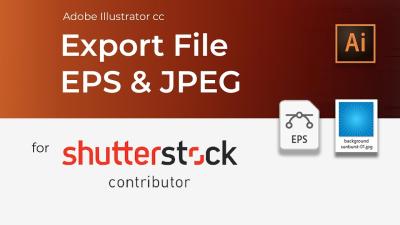If you’ve ever downloaded an image for your website, blog, or project, you’ve probably encountered the term “licensing.” Shutterstock, one of the biggest stock photo platforms out there, offers a variety of licensing options to give you the rights to use images legally. Understanding how licensing works and why it matters is essential to avoid legal issues and ensure you’re getting the right permissions for your needs. Whether you’re a small business owner, a content creator, or just someone passionate about visuals, knowing the ins and outs of Shutterstock licensing helps you make smarter, more cost-effective choices. Let’s dive into what makes licensing on
Factors That Influence Shutterstock Licensing Fees
When it comes to Shutterstock licensing fees, a lot of different factors come into play. It’s not a one-size-fits-all situation—your costs can vary based on several key elements. Here’s a breakdown of what influences those fees:
- Type of License: Shutterstock offers two main licensing options:
- Standard License: Suitable for most uses like websites, social media, or printed materials under a certain size. It’s more affordable and covers an average range of usage.
- Enhanced License: Needed if you plan to use images for large-scale prints, merchandise, or high-volume distribution. It costs more but gives you broader rights.
- Image Resolution and Size: Higher-resolution images and larger dimensions typically cost more because they’re more versatile and suitable for larger prints or displays.
- Image Popularity and Demand: Some images are in higher demand, which can drive up the price. Trending or highly sought-after images tend to be pricier.
- Usage Scope and Duration: How you plan to use the image and for how long can affect licensing fees. A one-time use on a single platform costs less than an ongoing, multi-platform license.
- Number of Downloads or Seats: If you’re licensing images for a team or multiple users, volume discounts may apply, reducing the per-image cost.
- Exclusive vs. Non-Exclusive Rights: Exclusive images—those only available to you—cost significantly more but give you sole usage rights, preventing others from using the same image.
Understanding these factors can help you better estimate your costs and select the right licensing option for your project. Keep in mind that while some images might seem pricey upfront, choosing the appropriate license type ensures you’re covered legally and ethically, avoiding potential penalties or the need to replace images later. Being aware of what impacts licensing fees also empowers you to plan your budget more effectively and make smarter choices about the visual content you use.
How Much Does a Shutterstock Licensing Fee Typically Cost?
If you’re new to Shutterstock, one of the first questions that probably pops into your mind is, “How much am I going to spend on licensing images?” The good news is that Shutterstock offers a range of options to fit different budgets and needs, but the costs can vary quite a bit depending on what you’re looking for.
Generally speaking, Shutterstock’s licensing fees are influenced by factors like the type of license you choose, the size of the image, and how you plan to use it. For standard images, you might pay anywhere from $10 to $50 per image when purchasing a single license. If you’re buying images in bulk or with a subscription, the per-image cost usually drops significantly.
For example, with a subscription plan, you might pay a fixed monthly fee—say, $49 per month—and get a set number of downloads (like 10 images per month). If you exceed that limit, additional images may be billed separately, often at a lower per-image rate than individual purchases.
It’s also worth noting that the size you choose can impact the cost. Larger, high-resolution images typically cost more than smaller versions, especially if you’re buying images on a per-image basis. So, if you need images for print or large banners, be prepared for a higher licensing fee.
To sum it up, typical licensing costs can look like this:
- Single image purchase: $10 – $50 per image
- Subscription plans: $49 – $199 per month, depending on the number of downloads
- Extended licenses: Additional fees for wider usage rights, which we’ll get into later
While it might seem straightforward, it’s always a good idea to review your needs carefully and check the pricing details on Shutterstock’s website, as costs can change and promotional deals may be available.
Different Types of Shutterstock Licenses and Their Pricing
When it comes to licensing images from Shutterstock, not all licenses are created equal. There are primarily two main types of licenses: Standard License and Enhanced License. Understanding the differences—and their respective costs—can help you make smarter decisions and avoid unexpected expenses down the line.
Standard License
The Standard License is the most common and is suitable for most digital uses like websites, social media, presentations, and small prints. It covers typical use cases and allows you to:
- Use images for online content
- Print up to 500,000 copies for marketing materials
- Include images in digital ads with certain reach limits
The cost for a Standard License usually ranges from $10 to $50 per image, depending on the size and resolution. If you’re a subscriber, your per-image cost decreases, and you may get access to a certain number of images per month, making it more budget-friendly.
Enhanced License
The Enhanced License is designed for more demanding uses, such as:
- Unlimited print runs without restrictions
- Use in products for resale (like T-shirts, mugs, or posters)
- Broader digital distribution with higher reach
- Use in TV or film productions
This license is more expensive, typically starting at around $80 to $200 per image, reflecting its broader rights and higher usage limits. It’s ideal if you need to incorporate images into commercial products or large-scale advertising campaigns.
Extended License Fees
Sometimes, even the Enhanced License might not cover certain uses, especially if you want to exceed the allowed print quantities or use images in merchandise for resale. In these cases, Shutterstock offers Extended Licenses for an additional fee. The cost varies depending on your specific needs but generally adds a few hundred dollars to your total bill.
Quick Comparison Table
| License Type | Best For | Typical Cost | Restrictions |
|---|---|---|---|
| Standard | Web, social media, small prints | $10 – $50 per image | Limited print runs, digital use |
| Enhanced | Commercial products, large-scale campaigns | $80 – $200+ per image | Broader rights, unlimited print runs |
| Extended | Resale products, high-volume use | Varies (extra fees) | Expanded rights beyond Enhanced License |
Choosing the right license depends on your specific project and how you plan to use the images. It’s always best to start with the license that fits your needs and upgrade if your project grows or changes scope. Understanding these options helps you manage costs effectively while staying within legal boundaries.
Tips for Managing and Reducing Licensing Costs
Feeling overwhelmed by Shutterstock licensing fees? You’re not alone! Many creators and businesses want to make the most of their budgets while still accessing high-quality images. The good news is, there are several smart strategies you can adopt to manage and even reduce those costs without sacrificing the quality you need.
First off, plan your image needs carefully. Instead of purchasing images on a whim, take some time to outline exactly what you need for your project. This helps avoid unnecessary downloads and keeps your expenses in check.
Next, consider using Shutterstock’s subscription plans if you find yourself needing multiple images regularly. Subscriptions often offer a lower per-image cost compared to on-demand purchases. Look for plans that align with your typical usage — whether it’s a weekly, monthly, or annual plan.
Another effective tip is to explore free or lower-cost alternatives when appropriate. Shutterstock offers a wide selection of images, but sometimes you can find suitable options on free platforms like Unsplash or Pexels. Just make sure to double-check licensing requirements to stay compliant.
Additionally, maximize your downloads by selecting images that serve multiple purposes. For example, choose versatile images that can be resized or repurposed across various channels, reducing the need for multiple licenses.
Keep an eye out for special promotions or discounts. Shutterstock occasionally offers deals, especially around holidays or at the start of new billing cycles. Signing up for their newsletter or following them on social media can help you stay informed about these opportunities.
Finally, consider purchasing extended licenses only when necessary. For most standard projects, an standard license suffices. Reserve the more costly extended licenses for large-scale campaigns or products that will generate significant revenue or exposure.
By being intentional and strategic, you can significantly cut down your licensing costs while still accessing the premium images you need. Think of it as budgeting smarter, not harder!
Conclusion and Final Thoughts on Shutterstock Licensing Expenses
Understanding Shutterstock licensing fees and costs can seem daunting at first, but once you get the hang of their structure and options, it becomes much easier to manage your expenses effectively. Remember, licensing is an investment in your creative projects, ensuring you’re legally protected and your work looks professional.
While the costs can add up, especially for frequent users or big projects, there are many ways to optimize your spend. From choosing the right plan and licensing type to planning your downloads strategically, small adjustments can lead to significant savings.
It’s also worth noting that the quality and variety of images Shutterstock offers are often worth the investment. High-quality visuals can elevate your brand, attract more attention, and make your content stand out. So, consider licensing fees as a part of your overall content strategy, rather than just an expense.
Ultimately, the key is to stay informed, plan ahead, and make wise choices tailored to your needs and budget. With a little effort, managing Shutterstock licensing costs can become a straightforward part of your creative workflow, helping you produce stunning content without breaking the bank.
Happy creating, and remember: the right images, used wisely, can make all the difference in bringing your vision to life!



